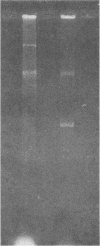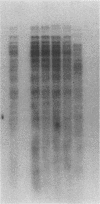Abstract
Bacteria able to mineralize 100 to 200 ppm of pentachlorophenol (PCP) were isolated by selective enrichment from PCP-contaminated soils from three geographic areas of Minnesota. Although differing somewhat in their responses to various biochemical and biophysical tests, all strains were assigned to the genus Flavobacterium. Five representative strains were examined in detail. All strains metabolized PCP as a sole source of carbon and energy; 73 to 83% of all carbon in the form of [U-14C]PCP was returned as 14CO2, with full liberation of chlorine as chloride. A comparison between strains in their ability to metabolize PCP showed some strains to be more efficient than others. Guanine-plus-cytosine contents of DNA ranged from 58.8 to 63.8%, and DNA/DNA hybridization studies with total DNA digests suggested substantial genetic homology between strains. All strains were shown to possess an 80- to 100-kilobase plasmid, and evidence suggested the presence of a larger plasmid (greater than 200 kilobases).
Full text
PDF
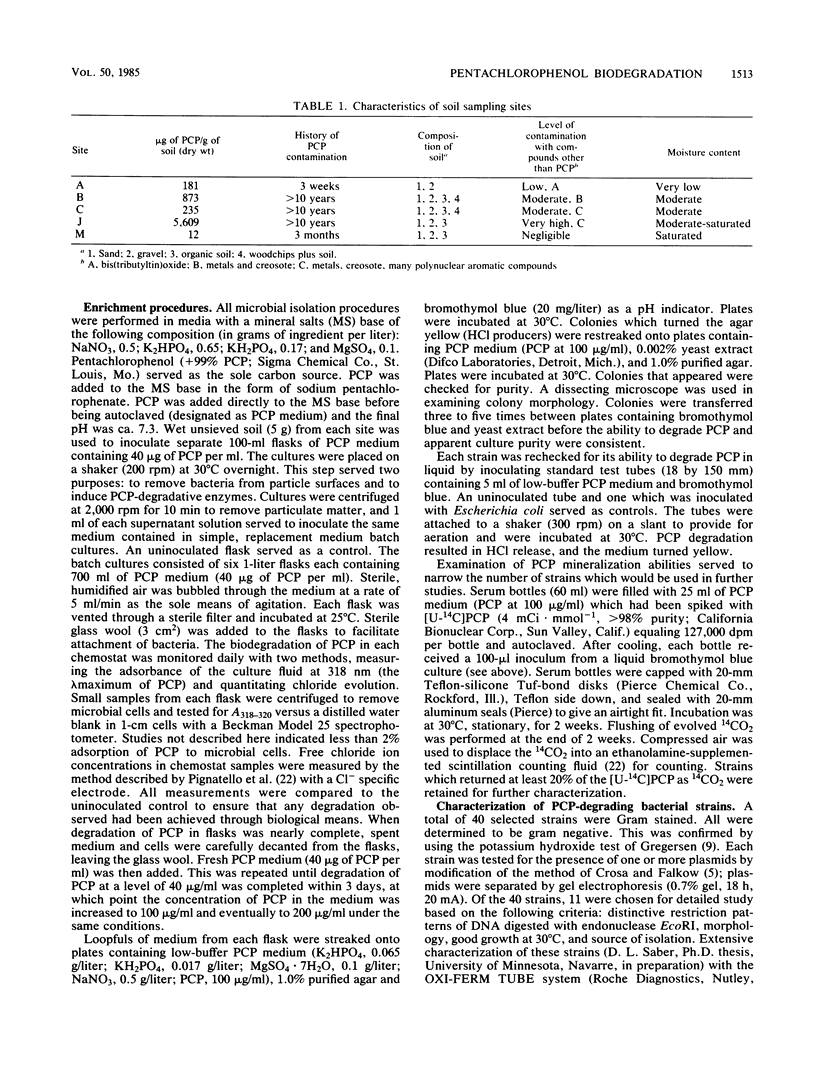

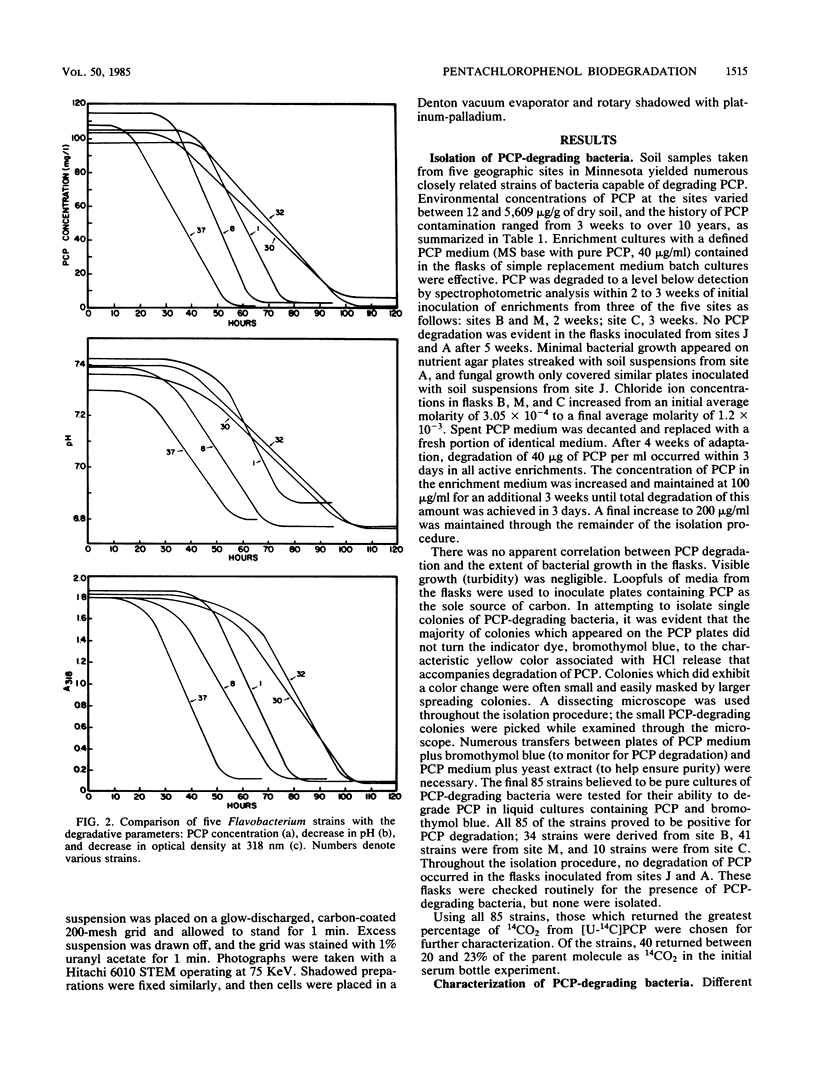
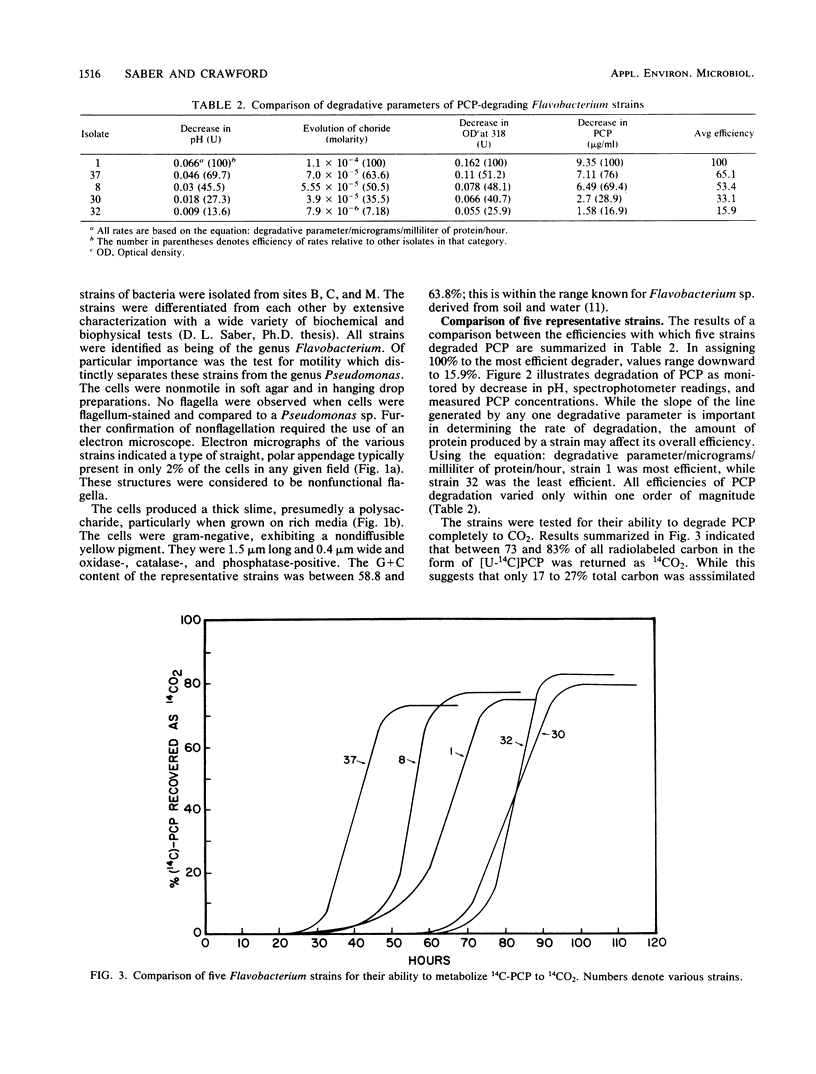
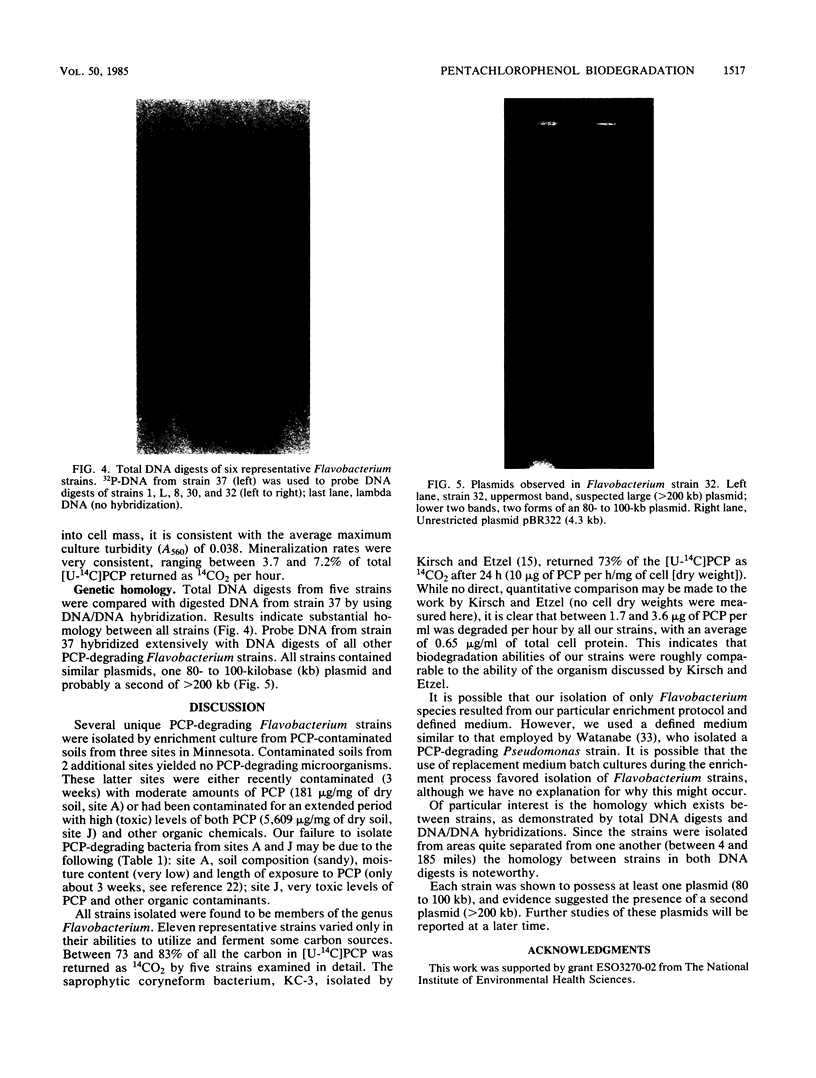

Images in this article
Selected References
These references are in PubMed. This may not be the complete list of references from this article.
- Bollag J. M., Helling C. S., Alexander M. Metabolism of 4-chloro-2-methylphenoxyacetic Acid by soil bacteria. Appl Microbiol. 1967 Nov;15(6):1393–1398. doi: 10.1128/am.15.6.1393-1398.1967. [DOI] [PMC free article] [PubMed] [Google Scholar]
- Chu J. P., Kirsch E. J. Metabolism of pentachlorophenol by an axenic bacterial culture. Appl Microbiol. 1972 May;23(5):1033–1035. doi: 10.1128/am.23.5.1033-1035.1972. [DOI] [PMC free article] [PubMed] [Google Scholar]
- Cserjesi A. J. The adaptation of fungi to pentachlorophenol and its biodegradation. Can J Microbiol. 1967 Sep;13(9):1243–1249. doi: 10.1139/m67-169. [DOI] [PubMed] [Google Scholar]
- Edgehill R. U., Finn R. K. Microbial treatment of soil to remove pentachlorophenol. Appl Environ Microbiol. 1983 Mar;45(3):1122–1125. doi: 10.1128/aem.45.3.1122-1125.1983. [DOI] [PMC free article] [PubMed] [Google Scholar]
- KAUFMAN D. D., KEARNEY P. C. MICROBIAL DEGRADATION OF ISOPROPYL-N-3 -CHLOROPHENYLCARBAMATE AND 2-CHLOROETHYL-N-3-CHLOROPHENYLCARBAMATE. Appl Microbiol. 1965 May;13:443–446. doi: 10.1128/am.13.3.443-446.1965. [DOI] [PMC free article] [PubMed] [Google Scholar]
- Kirsch E. J., Etzel J. E. Microbial decomposition of pentachlorophenol. J Water Pollut Control Fed. 1973 Feb;45(2):359–364. [PubMed] [Google Scholar]
- Kodaka H., Armfield A. Y., Lombard G. L., Dowell V. R., Jr Practical procedure for demonstrating bacterial flagella. J Clin Microbiol. 1982 Nov;16(5):948–952. doi: 10.1128/jcm.16.5.948-952.1982. [DOI] [PMC free article] [PubMed] [Google Scholar]
- MACRAE I. C., ALEXANDER M. METABOLISM OF PHENOXYALKYL CARBOXYLIC ACIDS BY A FLAVOBACTERIUM SPECIES. J Bacteriol. 1963 Dec;86:1231–1235. doi: 10.1128/jb.86.6.1231-1235.1963. [DOI] [PMC free article] [PubMed] [Google Scholar]
- Pignatello J. J., Martinson M. M., Steiert J. G., Carlson R. E., Crawford R. L. Biodegradation and photolysis of pentachlorophenol in artificial freshwater streams. Appl Environ Microbiol. 1983 Nov;46(5):1024–1031. doi: 10.1128/aem.46.5.1024-1031.1983. [DOI] [PMC free article] [PubMed] [Google Scholar]
- STEENSON T. I., WALKER N. The pathway of breakdown of 2:4-dichloro- and 4-chloro-2-methyl-phenoxyacetic acid by bacteria. J Gen Microbiol. 1957 Feb;16(1):146–155. doi: 10.1099/00221287-16-1-146. [DOI] [PubMed] [Google Scholar]
- Sethunathan N., Yoshida T. A Flavobacterium sp. that degrades diazinon and parathion. Can J Microbiol. 1973 Jul;19(7):873–875. doi: 10.1139/m73-138. [DOI] [PubMed] [Google Scholar]
- Southern E. M. Detection of specific sequences among DNA fragments separated by gel electrophoresis. J Mol Biol. 1975 Nov 5;98(3):503–517. doi: 10.1016/s0022-2836(75)80083-0. [DOI] [PubMed] [Google Scholar]
- Stanlake G. J., Finn R. K. Isolation and characterization of a pentachlorophenol-degrading bacterium. Appl Environ Microbiol. 1982 Dec;44(6):1421–1427. doi: 10.1128/aem.44.6.1421-1427.1982. [DOI] [PMC free article] [PubMed] [Google Scholar]
- Suzuki T. Metabolism of pentachlorophenol by a soil microbe. J Environ Sci Health B. 1977;12(2):113–127. doi: 10.1080/03601237709372057. [DOI] [PubMed] [Google Scholar]
- Walker N. A soil Flavobacterium sp. that degrades sulphanilamide and asulam. J Appl Bacteriol. 1978 Aug;45(1):125–129. doi: 10.1111/j.1365-2672.1978.tb04205.x. [DOI] [PubMed] [Google Scholar]




